Halong Bay, a UNESCO World Heritage site in Vietnam, is as famous for its sublime scenery as it is for its rich culinary landscape. The Horseshoe Crab (Sam), a local delicacy, captures the essence of Ha Long’s diverse marine life and the culinary creativity of its people. More than a dish, the Horseshoe Crab is a cultural icon, with preparation techniques steeped in history and community. Its consumption reflects the deep connection between the people of Ha Long and the bountiful sea. As we explore the Horseshoe Crab’s role in Ha Long’s cuisine, we find a dish that is not only a celebration of the region’s ecological diversity but also a link to its cultural roots.
History and Cultural Significance
Nestled in the heart of Ha Long’s gastronomic culture is the Horseshoe Crab, a delicacy that has graced local tables for centuries. Its culinary history is as deep as the waters of the bay, where these creatures have been harvested, reflecting a longstanding symbiosis between nature and nourishment. Horseshoe Crab dishes are not only a testament to the area’s rich biodiversity but also to the ingenuity of traditional cooking methods that have been honed over generations.
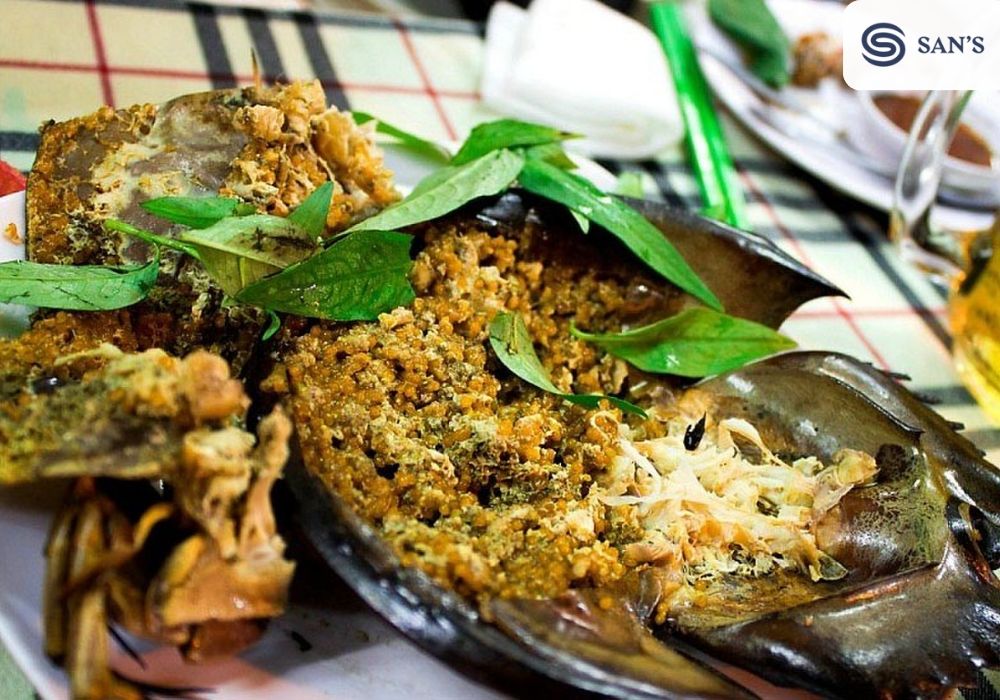
The cultural tapestry of Ha Long is interwoven with festivals and traditions that celebrate the sea’s bounty, and the Horseshoe Crab plays a starring role in these festivities. It is a dish served with reverence, often at the center of communal feasts and special occasions, symbolizing prosperity and unity.
In Vietnamese culture, the Horseshoe Crab is surrounded by stories and myths that add to its mystique. It is said to bring good luck to those who consume it and is often associated with folklore tales that speak of the sea’s mysterious and life-giving properties. The preparation and enjoyment of this ancient mariner are considered an art, a culinary practice rich with history, and a beloved ritual that connects the past to the present in the vibrant heart of Ha Long.
Horseshoe Crab: An Overview
The Horseshoe Crab, an intriguing marine arthropod, has existed for over 450 million years, making it a living fossil that predates even the dinosaurs. With its hard exoskeleton and spiked tail, this creature has become an icon of evolutionary resilience. There are four recognized species of Horseshoe Crabs, with Limulus polyphemus being the most well-known, primarily found along the Atlantic coasts of North America and in the Gulf of Mexico. In Asia, other species such as Tachypleus tridentatus grace the shores, including the coastal waters of Ha Long.
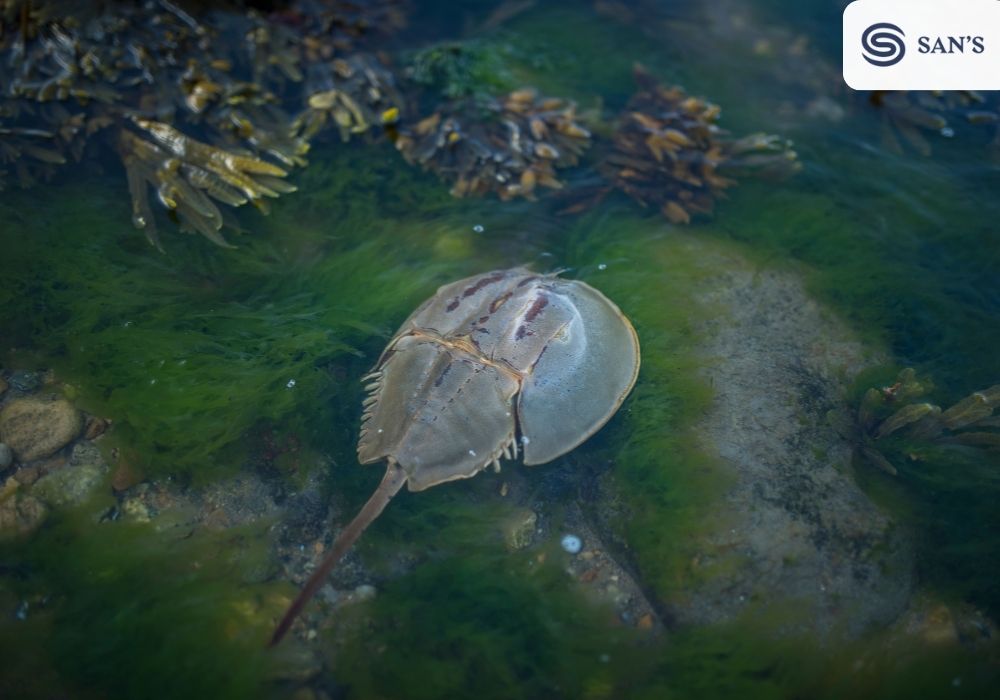
These crabs favor shallow ocean floors, estuaries, and coastal zones where they can feed on worms and mollusks. Halong Bay, with its rich intertidal zones and healthy mangrove ecosystems, provides an ideal habitat for them to thrive. The bay’s warm, saline waters offer a sanctuary for spawning—a critical stage in their life cycle.
Sustainability concerns have grown around the harvesting of Horseshoe Crabs, primarily due to their valuable blue blood, which is indispensable in medical research for testing the sterility of medical equipment and vaccines. Additionally, their eggs are a crucial food source for migrating shorebirds. In Ha Long and other locations, environmentalists emphasize balanced harvesting practices to prevent the disruption of these crabs’ ecological role and the endangerment of their populations. This includes monitoring harvest numbers, protecting spawning grounds, and implementing seasonal restrictions to ensure that the Horseshoe Crab remains a sustainable resource for future generations.
Culinary Preparation of Horseshoe Crab
Preparing a Horseshoe Crab for culinary purposes is an intricate process that honors tradition while embracing the crab’s unique anatomy. Initially, the crab is carefully cleaned, with its carapace scrubbed and its long tail spike, or telson, inspected for quality. Chefs skillfully detach the top shell to reveal the rich and flavorful roe and tender meat beneath, which are the primary edible parts.
Traditional recipes often involve boiling or steaming the Horseshoe Crab to preserve its natural flavors. In Ha Long, a popular method is to steam the crab with lemongrass and herbs, which infuses the meat with aromatic notes. The roe, considered a delicacy, is sometimes prepared separately, sautéed with onions and spices, or used as a savory addition to omelets and stir-fries.
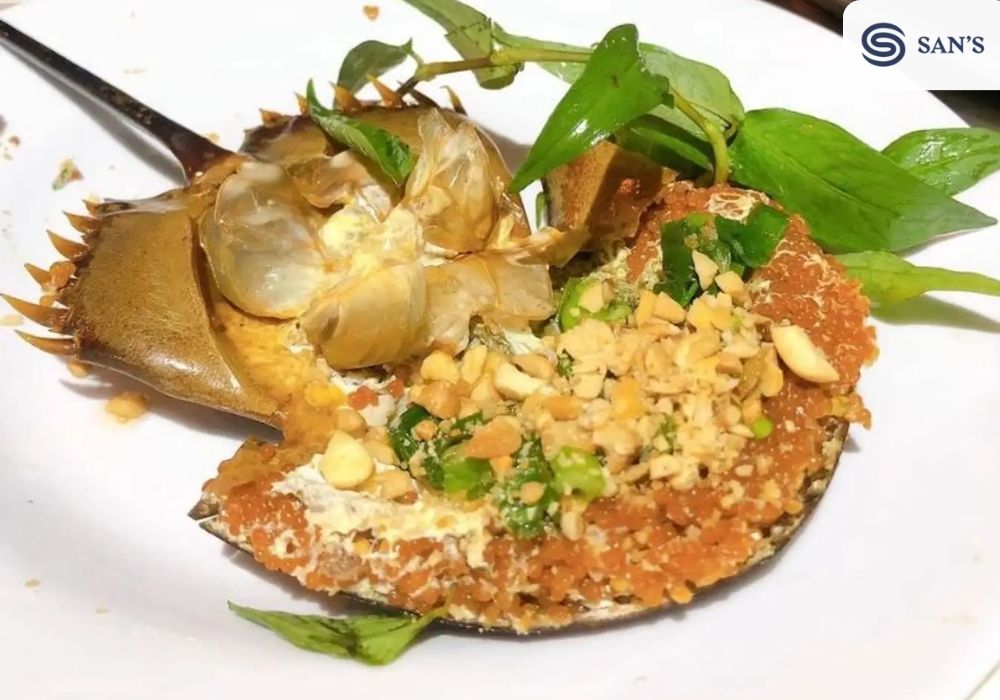
In modern cuisine, chefs have been experimental with Horseshoe Crab, introducing contemporary flavors and techniques while respecting the ingredient’s heritage. Innovations include using the meat in fusion dishes, such as incorporating it into pasta or creating sophisticated appetizers where its texture and taste can be the star. Some avant-garde chefs have even extracted the crab’s blue blood to create striking sauces and glazes, although this is rare and done with a nod to sustainable practices.
The culinary preparation of Horseshoe Crab is a testament to the versatility of this ancient species and its continued relevance in both traditional and contemporary gastronomic realms. Whether served in its purest form or as part of a modern dish, the Horseshoe Crab remains a cherished component of Ha Long’s culinary identity.
Nutritional and Health Benefits
The nutritional profile of Horseshoe Crab is noteworthy, especially considering its use in regional diets where seafood plays a significant role. Horseshoe Crab meat is a lean source of protein, essential for muscle building and repair. It’s also rich in certain minerals such as zinc and copper, which are vital for maintaining a healthy immune system and aiding in the production of red blood cells.
The blue blood of the Horseshoe Crab, while not consumed, contains a substance called Limulus Amebocyte Lysate (LAL) which is used in the medical industry. However, the edible parts of the crab, like the roe, are considered beneficial for their high content of omega-3 fatty acids. These fats are known to contribute to cardiovascular health and may help in reducing inflammation in the body.
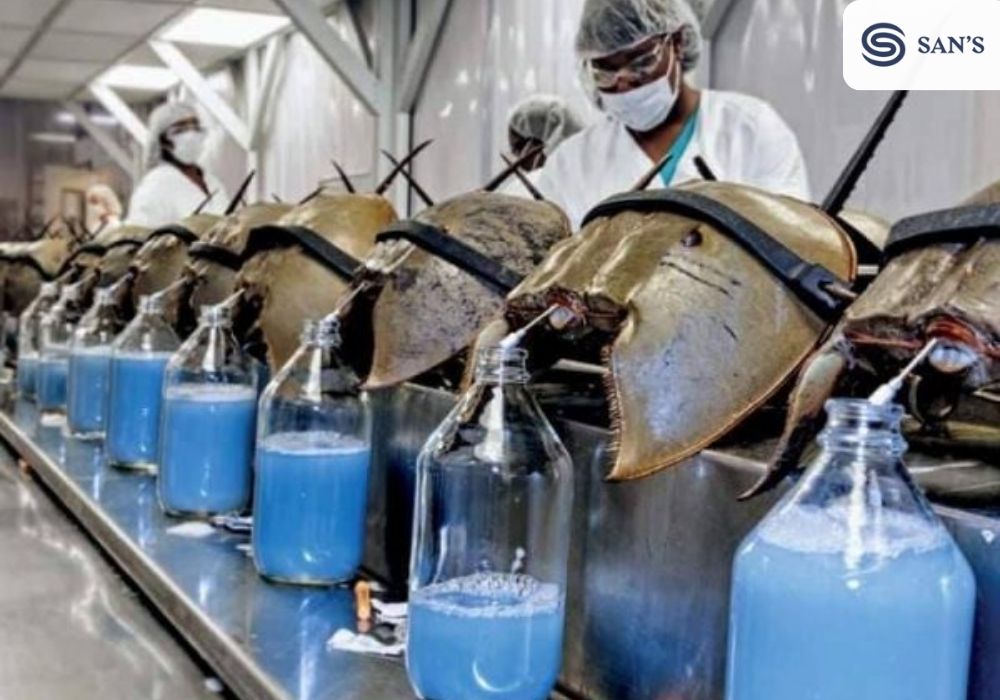
From a health perspective, eating Horseshoe Crab can be advantageous, but like with all foods, there are dietary considerations to keep in mind. Individuals with shellfish allergies should exercise caution as Horseshoe Crabs, like other crustaceans, can trigger allergic reactions. It’s also important to consider the source of the Horseshoe Crab, as environmental pollutants can affect the safety of consuming this ancient mariner.
In terms of preparation, the health benefits can be maximized by cooking methods that require little to no added fats, such as steaming or boiling. When incorporated into a balanced diet, the Horseshoe Crab can contribute to a range of nutritional benefits, while also offering a taste of Ha Long’s rich culinary heritage.
Dining Experience and Etiquette
When dining on Horseshoe Crab in Ha Long, one can anticipate a meal that engages all the senses. The presentation of the dish often highlights the crab’s prehistoric appearance, served whole or with the carapace as an ornamental cover. Diners are typically provided with tools to crack open the hard shell and extract the meat, offering an interactive and immersive experience.
Etiquette dictates that diners should approach the dish with respect, acknowledging the cultural and gastronomic importance of the Horseshoe Crab. It’s customary to begin by tasting the delicate roe, which is considered a delicacy, often with a small spoon provided for this purpose. Eating Horseshoe Crab can be a slow and methodical process, savoring the flavors and textures unique to this marine species.
To elevate the dining experience, local beverages can complement the dish’s flavors. A crisp, chilled white wine or a light beer can balance the richness of the crab. For a more traditional pairing, a glass of ‘ruou,’ a Vietnamese rice wine, can accompany the meal, its potent profile cutting through the dish’s savory notes. Enjoying Horseshoe Crab is more than just a meal; it’s a cultural dive into the essence of Ha Long’s coastal cuisine.
Traveler’s Guide to Enjoying Horseshoe Crab in Ha Long
Ha Long Bay offers an array of dining venues where travelers can enjoy the quintessential Horseshoe Crab. For an authentic experience, the floating restaurants anchored along the Cai Rong and Bai Tu Long bays are renowned for serving fresh seafood, including Horseshoe Crab. Upscale dining options are available on the main island, where chefs present this local specialty with a gourmet twist.
Tourists looking to savor Horseshoe Crab should consider visiting during the spring and early summer months when the crabs are most plentiful. This is also the time when the females lay their eggs, making it a peak season for the freshest and most flavorful roe.
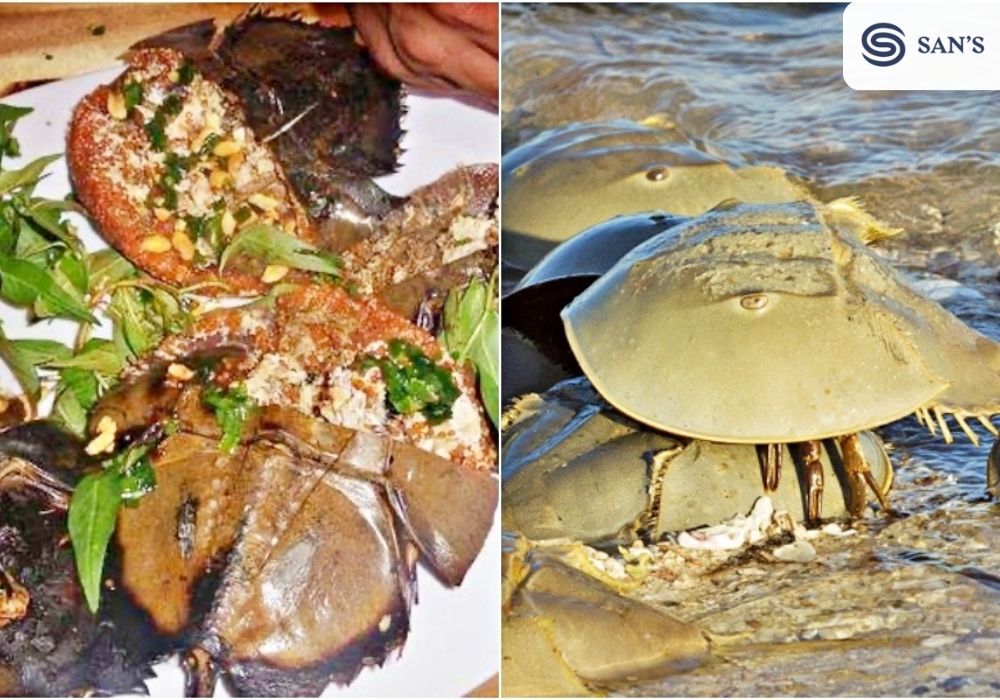
When ordering Horseshoe Crab, it’s advisable to inquire about the day’s catch to ensure freshness. Prices can vary depending on the size of the crab and the venue, with waterfront restaurants typically charging a premium. Visitors should also be aware of the preservation efforts and opt to dine at establishments that source their seafood sustainably.
For an immersive gastronomic experience, travelers can join culinary tours that often include a visit to local markets to select live Horseshoe Crabs, followed by a cooking demonstration. This not only provides a deeper appreciation for the dish but also supports the local community and eco-friendly practices. Whether enjoyed at a simple street stall or a fine dining restaurant, Horseshoe Crab remains a must-try for any culinary adventurer in Ha Long.
Conservation and Future Perspectives
The conservation of Horseshoe Crabs has become a priority, particularly in regions like Ha Long where they are a valued culinary ingredient. Sustainable harvesting efforts are in place to protect these ancient creatures, which play a pivotal role in the marine ecosystem. Organizations and researchers are working to establish quotas and size limits, ensuring that only mature crabs are harvested and that their breeding populations remain healthy.
Local communities, often the stewards of these practices, are increasingly involved in conservation work. They collaborate with authorities to enforce sustainable fishing practices and participate in tagging and monitoring programs to track crab populations. Educational initiatives are also crucial, informing fishermen and consumers about the importance of preserving Horseshoe Crab populations.
Looking ahead, the future of Horseshoe Crabs as a culinary ingredient is closely tied to these conservation efforts. The culinary industry, along with tourists’ increasing preference for sustainable dining, is prompting a shift towards more responsible consumption. Restaurants are beginning to source their Horseshoe Crabs from suppliers who adhere to strict sustainable standards. This not only ensures the longevity of the species but also maintains the integrity of Ha Long’s culinary heritage for future generations to enjoy.
Conclusion
For those embarking on a culinary journey in Ha Long, the experience of dining on Horseshoe Crab is an unmissable adventure. It’s an opportunity to taste a piece of history, to connect with the local culture, and to contribute to the preservation of an ecological and cultural treasure. As you explore the majestic beauty of Ha Long Bay, let the Horseshoe Crab be a highlight of your gastronomic exploration, a dish that delights the palate while honoring the legacy of this extraordinary region. Book a Halong Bay tour at San Travel today to receive many attractive offers as well as enjoy this delicious dish!


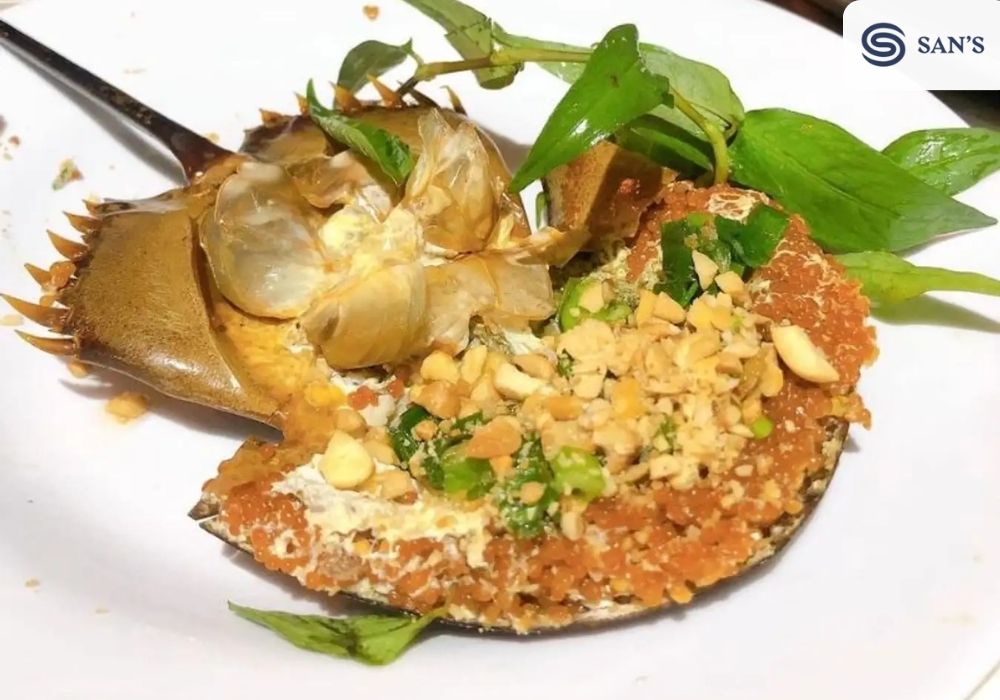
Comment (0)